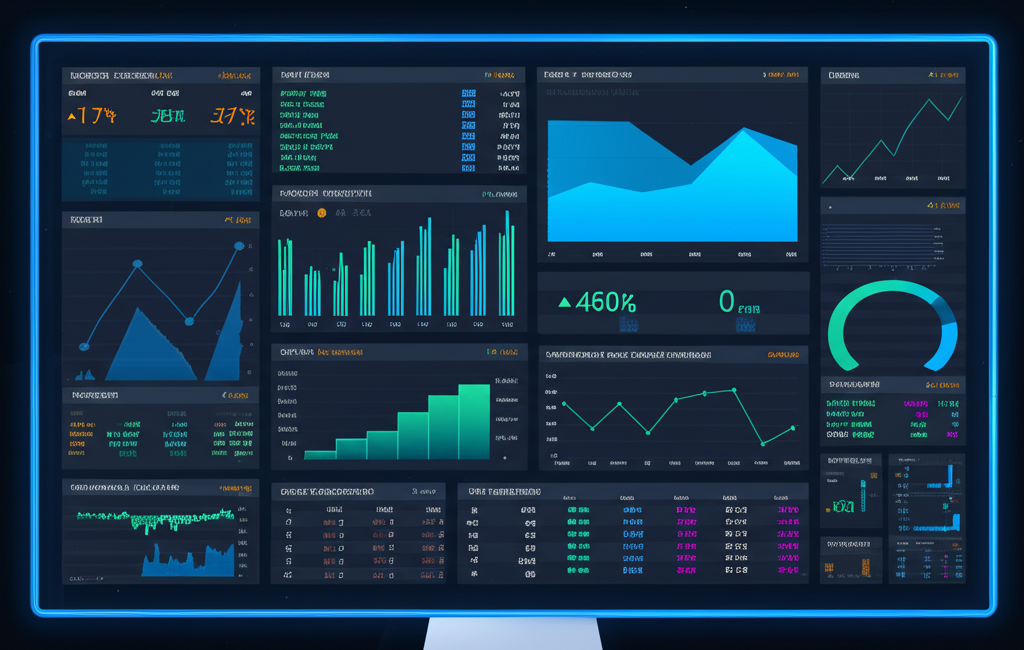The landscape of algorithmic trading in India is evolving rapidly, driven by technological advancements, regulatory changes, and increasing market sophistication. As one of the fastest-growing economies in the world with a vibrant financial market, India presents unique opportunities and challenges for algorithmic traders. In this article, we'll explore the current state of algorithmic trading in India and analyze emerging trends that will shape its future.
The Current State of Algorithmic Trading in India
Market Infrastructure and Adoption
Algorithmic trading has gained significant traction in India over the past decade:
- According to NSE (National Stock Exchange) data, algorithmic trading now accounts for approximately 40-50% of the total trading volume in the equity segment
- The derivatives segment sees even higher algorithmic participation, with estimates ranging from 60-70% of total volume
- Institutional investors dominate the algorithmic trading space, but retail participation is growing rapidly
- Co-location services offered by exchanges have facilitated the growth of high-frequency trading (HFT)
Regulatory Framework
The Securities and Exchange Board of India (SEBI) has established a comprehensive regulatory framework for algorithmic trading:
- Mandatory approval process for algorithmic strategies used by brokers
- Requirements for risk controls and system audits
- Order-to-trade ratio restrictions to prevent system abuse
- Penalties for algorithmic trading disruptions
- Minimum tick sizes and order value requirements
Current Challenges
Despite its growth, algorithmic trading in India faces several challenges:
- High regulatory barriers for retail algorithmic traders
- Limited access to historical data compared to developed markets
- Technology infrastructure gaps, particularly in tier-2 and tier-3 cities
- Talent shortage in quantitative finance and algorithmic development
- Relatively high latency compared to more developed markets
Emerging Trends Shaping the Future
1. Democratization of Algorithmic Trading
One of the most significant trends is the democratization of algorithmic trading, making it accessible to a broader range of market participants:
- API-based trading platforms that allow retail traders to implement algorithms without advanced programming skills
- Algorithmic trading education becoming more widely available
- Reduction in computing costs making sophisticated strategies more accessible
- Broker-provided algorithmic trading platforms with pre-built strategies
- Community-based platforms for sharing and testing trading ideas
2. Regulatory Evolution
The regulatory landscape is expected to evolve to balance innovation with market stability:
- Potential introduction of a "regulatory sandbox" for testing new algorithmic trading technologies
- More granular regulations distinguishing between different types of algorithmic trading
- Enhanced disclosure requirements for large algorithmic traders
- Standardization of backtesting and risk management practices
- Potential relaxation of some restrictions for retail algorithmic traders
3. Integration of Artificial Intelligence and Machine Learning
AI and ML are transforming algorithmic trading strategies:
- Natural Language Processing (NLP) for analyzing news, social media, and corporate disclosures
- Deep learning models for pattern recognition in market data
- Reinforcement learning for dynamic strategy optimization
- Alternative data integration (satellite imagery, consumer spending patterns, etc.)
- Sentiment analysis of market participants
4. Market Microstructure Evolution
The underlying market structure is evolving to accommodate algorithmic trading:
- Reduction in minimum tick sizes for certain securities
- Introduction of new order types catering to algorithmic strategies
- Improvements in exchange matching engines and throughput
- Enhanced market data feeds with greater granularity
- Potential introduction of periodic batch auctions to reduce latency advantages
5. Cross-Asset and Cross-Exchange Strategies
The future will see more sophisticated strategies spanning multiple assets and exchanges:
- Integration of equity, commodity, and currency markets in algorithmic strategies
- Arbitrage opportunities between NSE, BSE, and international exchanges
- Strategies leveraging correlations between seemingly unrelated assets
- Development of unified trading platforms spanning multiple asset classes
- Regulatory frameworks for cross-border algorithmic trading
Opportunities in the Indian Algorithmic Trading Landscape
1. Market Inefficiencies
The Indian market still exhibits inefficiencies that can be exploited by algorithmic strategies:
- Pricing discrepancies between cash and futures markets
- Inefficient pricing of options, particularly in less liquid strikes
- Sectoral rotation opportunities during economic cycles
- Liquidity premiums in mid and small-cap stocks
- Behavioral biases around corporate events and news
2. Retail Algorithmic Trading Platforms
There's significant opportunity in developing platforms that make algorithmic trading accessible to retail investors:
- No-code or low-code strategy development environments
- Strategy marketplaces where developers can sell algorithms
- Educational resources integrated with trading platforms
- Risk management tools designed for retail traders
- Social trading features allowing strategy sharing and following
3. Alternative Data Integration
India's digital transformation is generating vast amounts of alternative data that can be integrated into algorithmic strategies:
- Digital payment trends from UPI and other platforms
- E-commerce sales data for consumer sentiment analysis
- Social media sentiment specific to Indian markets
- Satellite imagery for agricultural production estimates
- Mobile phone usage patterns for economic activity indicators
Challenges and Risks
1. Technological Arms Race
As algorithmic trading becomes more prevalent, the technological arms race intensifies:
- Increasing costs for maintaining competitive infrastructure
- Growing importance of specialized hardware (FPGAs, GPUs)
- Talent acquisition and retention challenges
- Diminishing returns as strategies become more widely adopted
- Cybersecurity risks as systems become more complex
2. Systemic Risks
The growth of algorithmic trading introduces potential systemic risks:
- Correlation of algorithmic strategies leading to crowded trades
- Potential for flash crashes or liquidity vacuums
- Feedback loops between different algorithmic systems
- Market fragility during extreme events
- Challenges in regulatory oversight of complex systems
3. Ethical and Social Considerations
The rise of algorithmic trading raises important ethical questions:
- Market fairness between different classes of participants
- Transparency of market operations
- Impact on price discovery and capital formation
- Potential for market manipulation through sophisticated algorithms
- Social perception of algorithmic trading and its effects
Conclusion
The future of algorithmic trading in India is bright, with technological advancements, regulatory evolution, and increasing market sophistication creating a fertile environment for innovation. While challenges remain, the trajectory is clear: algorithmic trading will continue to grow in importance and sophistication in the Indian financial markets.
At Algocrab, we're committed to being at the forefront of these developments, providing traders with the tools, education, and infrastructure needed to succeed in the evolving algorithmic trading landscape in India. Whether you're an institutional investor, a professional trader, or a retail participant, our platform is designed to help you navigate the future of algorithmic trading in the Indian market.


